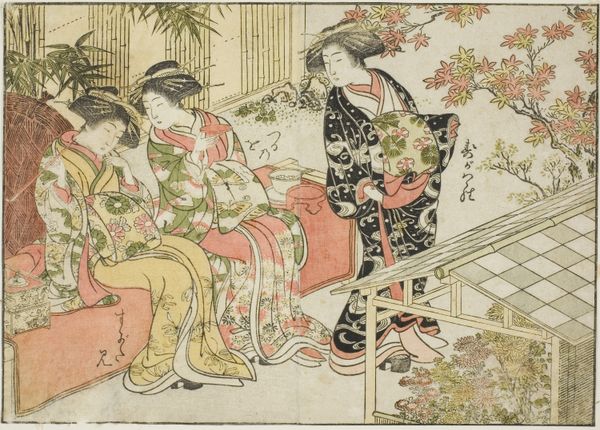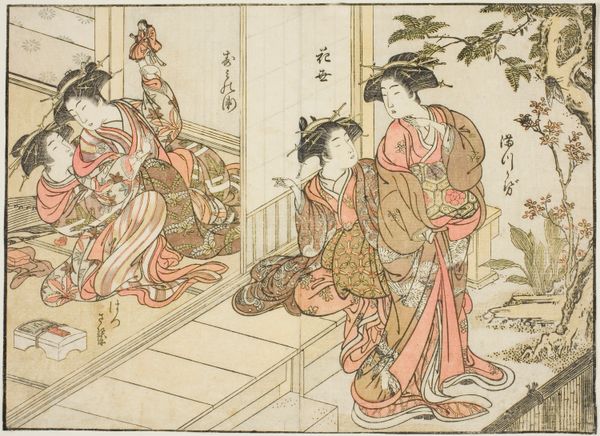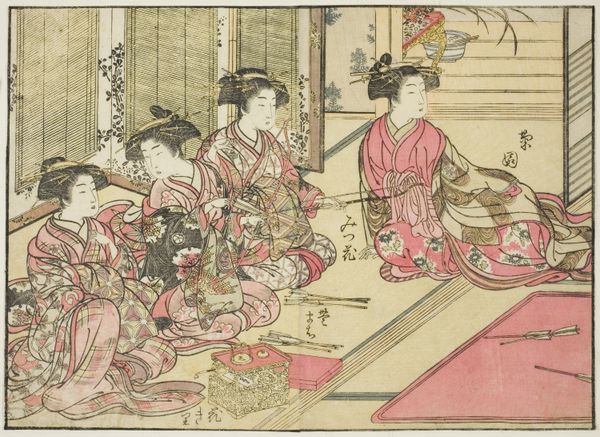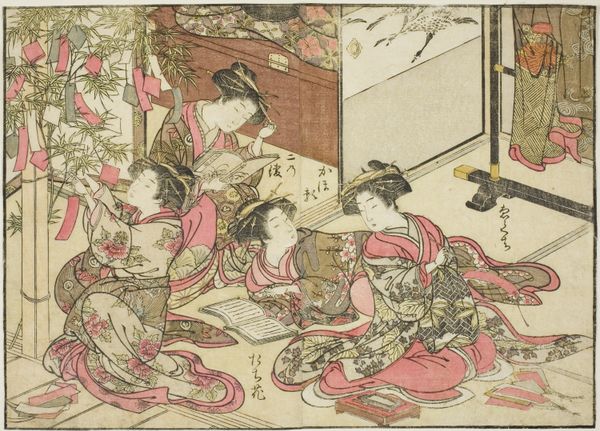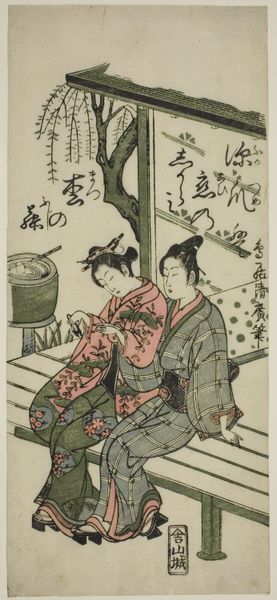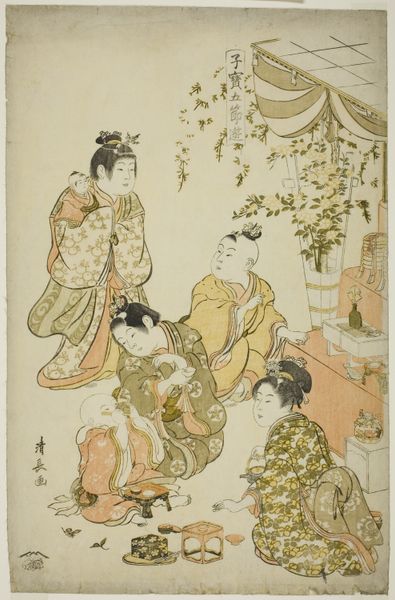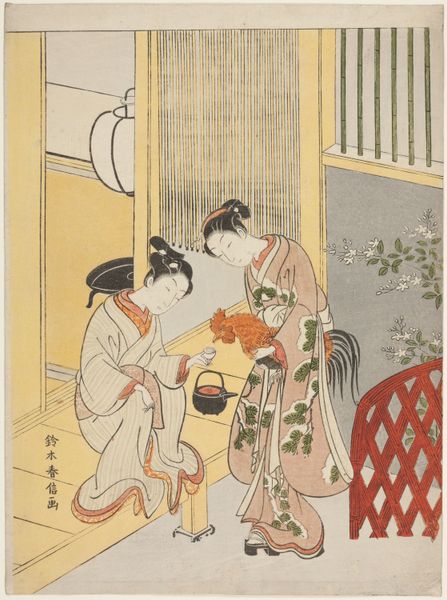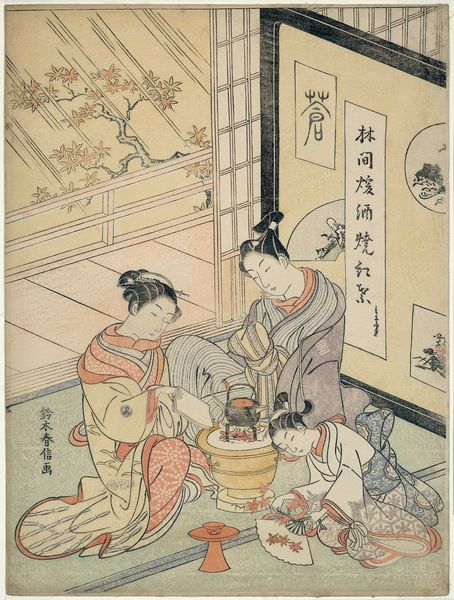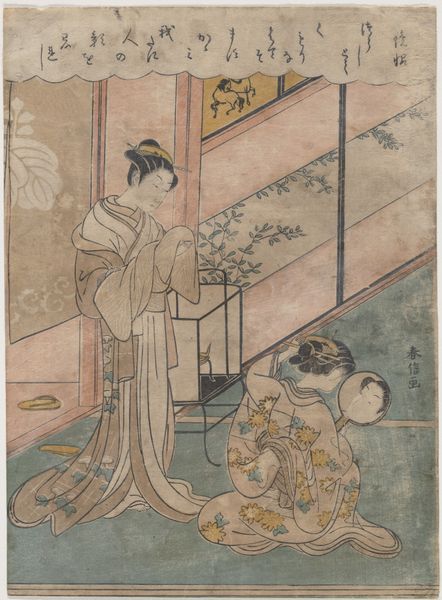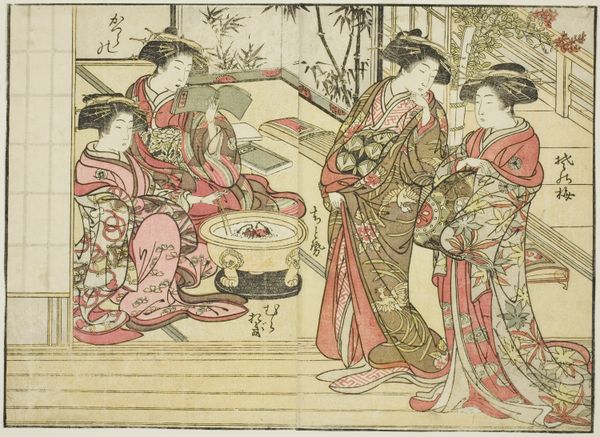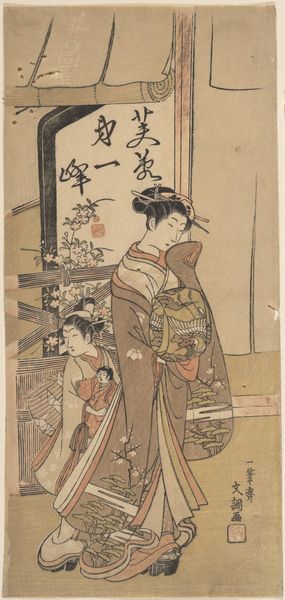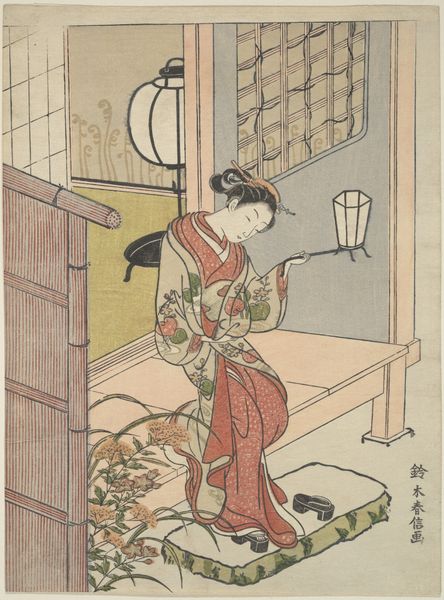
Courtesans of Yotsumaya, from the book "Mirror of Beautiful Women of the Pleasure Quarters (Seiro bijin awase sugata kagami)," vol. 2 1776
0:00
0:00
#
portrait
# print
#
asian-art
#
ukiyo-e
#
genre-painting
Dimensions: 8 7/8 × 11 7/8 in.
Copyright: Public Domain
Curator: Just look at the delicate composure of Kitao Shigemasa’s 1776 woodblock print, "Courtesans of Yotsumaya, from the book 'Mirror of Beautiful Women of the Pleasure Quarters'." The level of detail for such a small piece is breathtaking. Editor: Breathtaking is right. I’m struck by the serene expressions on these women; a kind of world-weariness. It reminds me of gazing into a still pond; the surface is calm, but you sense the currents moving beneath. Curator: Exactly. Shigemasa’s command over line and color captures the layered complexity of these women's lives. It speaks volumes about status and societal expectations, but also offers glimpses of genuine human connection. The flower arrangement there on the right—an elegant asymmetry hinting at their cultivated, if prescribed, lives. Editor: The composition is so carefully constructed. The women form this closed circle, their gazes directed inward, almost as if protecting some shared secret. That ornamental flower arrangement offers an interesting counterpoint to their confinement. It has elements reaching out of its vessel, mimicking the confined, but decorative role of the courtesans. Curator: Ukiyo-e prints, especially portraits, walk a tightrope between idealized beauty and sharp social commentary. Each figure feels deliberately rendered; observe the details in the textiles—each courtesan showcasing different patterns which speak to identity within a prescribed role. Even though mass produced, they were meant to evoke this sense of luxury and personalized charm. Editor: It's compelling how the artist hints at individuality while showing them together as a set. I wonder how viewers from that time read into the scene? It’s a fascinating window into fleeting beauty and constrained freedoms, really. Even in the composition's asymmetry, Shigemasa suggests both control and escape—it's beautiful, in its somber way. Curator: Indeed. These echoes and visual cues within the composition, carefully placed… Well, they seem to whisper across time, don't they? Editor: Absolutely. You walk away contemplating who holds the true power within the image, as well as who doesn't. The composition really emphasizes the double standards applied in this social stratum, even if they can also play into it to survive. The visual echoes can feel tragic.
Comments
No comments
Be the first to comment and join the conversation on the ultimate creative platform.
